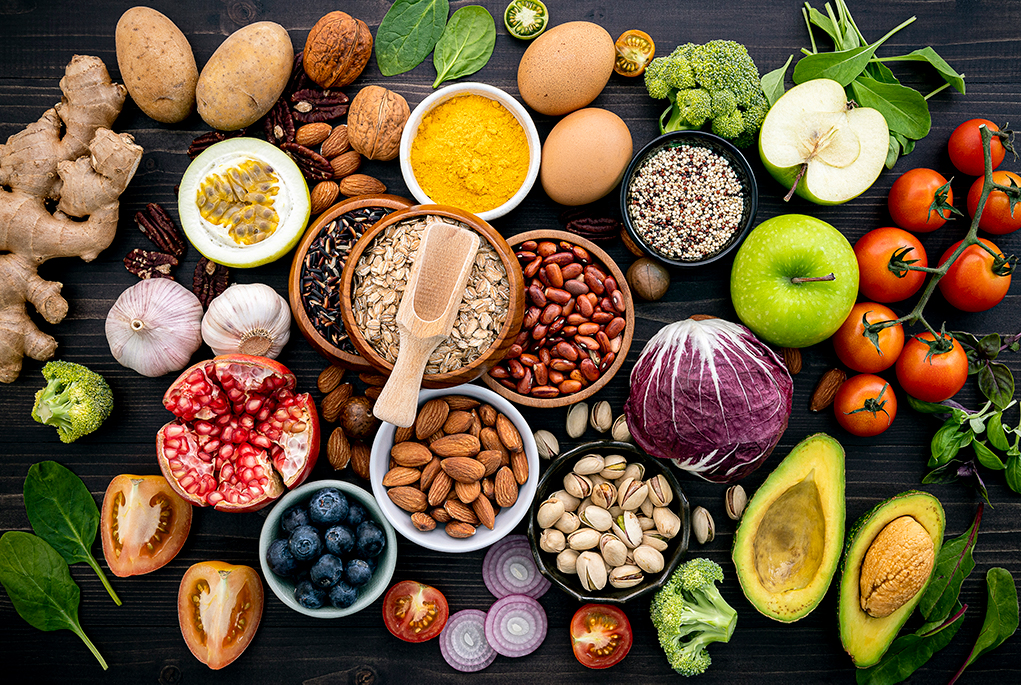
In the first trimester, you should eat at least three to five portions of fruits and veggies daily. There are three options: spinach, green peas and broccoli. This is because spinach is high in folic acids, which is why it is so beneficial. Broccoli is good because it contains lots iron. While it's not recommended for women who are pregnant with hypothyroidism or for anyone else, it's safe for everyone. Other first trimester foods to avoid include tomatoes, red, green, and yellow bell peppers, sweet potatoes, and avocado.
The first trimester should have plenty of whole grain and lentils. These will provide the essential nutrients your growing baby needs to grow and develop. Two servings of protein are recommended daily for the first three weeks of pregnancy. These could include eggs, dairy products, fish, chicken, and nuts. These are the foods you should avoid during this time.
Prenatal nutritionists are the best way for you to make sure that your baby's health is protected. A nutritionist can help you determine what diet is best for you and your baby, as well as advise you about the foods that you should avoid while pregnant. By following a healthy diet plan, you'll ensure a healthy delivery and a happy baby. Being a mom is exciting in the first trimester.

As a mom, it is important to reduce your intake of fatty and processed meats. The baby's health can be harmed by raw and deli meats. Avoid shellfish, sashimi and sushi. Consuming mercury-rich fish is also a bad idea. These are just a few of the reasons why you should avoid eating raw eggs, oysters and shark.
These fish can be tempting to consume, so don't. They can make your baby's stomach sick. This is a natural reaction to hormones. However, it is important to take into account your stage to decide what food you should eat. Focusing on healthy food is the most important thing. You should focus on eating a variety of vegetables and fruits, and avoiding fatty meats is crucial.
Your baby grows most rapidly in the first trimester. Therefore, you should ensure that you are getting plenty of protein. If you plan on having a baby, it is a good idea to take a prenatal Vitamin and eat iron-rich foods. Because they are higher in iron than other kinds of meat, lean and fish should be your primary source of iron. You should avoid fried foods and processed foods in the first trimester.
When choosing foods to eat in the first trimester of pregnancy, be sure to read labels. You can eat most meats during the second quarter, but there are certain foods you should avoid. Unpasteurized dairy products can contain Listeria bacteria which can cause infection in unborn children. Soft cheeses coated with white substances should be avoided.

You should also avoid raw fish and shellfish. They can be a source of food-borne infections. Raw shellfish can contain harmful bacteria, so you should be careful. These foods can be killed by cooking. To protect your baby, it is important to use pasteurized dairy products. There are still options to purchase pasteurized dairy products if you are unable find them in your local grocery store. You should also ensure your baby is safe by choosing non-pasteurized foods.
Your nutrition is an important aspect of your first trimester. In addition to eating a healthy diet, you should also avoid processed foods. The best source of protein are fresh fruits and veggies. Your diet should include plenty folates. These foods contain folates that are necessary for the proper development and functioning of the baby's nervous systems. U.S. Public Health Service recommends that pregnant woman consume 400 micrograms daily of folate.
FAQ
How does an antibiotic work?
Antibiotics kill harmful bacteria. The treatment of bacterial infections is done with antibiotics. There are many options for antibiotics. Some can be taken orally while others are injected. Others are topically applied.
Many people who have been exposed can be prescribed antibiotics. An oral antibiotic might be prescribed to someone who has been exposed to chicken pox. This will prevent the spread of shingles. Penicillin might also be administered to someone with strep throat. This will help prevent the possibility of developing pneumonia.
Children should not be given antibiotics without the consent of a doctor. Children are at greater risk of developing side effects from antibiotics than adults.
Diarrhea, the most common side-effect of antibiotics, is probably diarrhea. Other side effects possible include dizziness, nausea, vomiting, stomach cramps, dizziness and allergic reactions. Most of these symptoms disappear after the treatment is completed.
How often do I need to exercise?
Fitness is key to a healthy lifestyle. There is no time limit on how much you should exercise. The key is finding something you enjoy and stick with it.
If you work out three times a week, then aim to complete 20-30 minutes of moderate intensity physical activity. Moderate intensity is when you still have to breathe hard after the workout. This type works out burns around 300 calories.
If you prefer to walk, go for 10 minute walks four days a week. Walking is easy on the joints and has low impact.
If you'd rather run, try jogging for 15 minutes three times a week. Running can help you burn calories and to tone your muscles.
If you're not used to exercising, start slowly. You can start with only 5 minutes per week of cardio. Gradually increase the duration until you reach your goal.
How do I get enough vitamins?
You can get most of the daily nutrients you need through your diet. Supplements can be helpful if you are lacking in any one vitamin. A multivitamin can contain all the vitamins that you need. You can also purchase individual vitamins at your local drugstore.
Talk to your doctor if there are any concerns about getting enough nutrients. For example, dark green leafy vegetables such as spinach, broccoli, kale, collard greens, turnip greens, mustard greens, bok choy, romaine lettuce, arugula, and Swiss chard are rich in vitamins K and E. Other good sources include oranges, tomatoes, strawberries, cantaloupe, carrots, sweet potatoes, pumpkin, and squash.
If you are not sure how much vitamin you should be consuming, ask your doctor. He or she will recommend the appropriate dosage based on your medical history and current health status.
Statistics
- WHO recommends consuming less than 5% of total energy intake for additional health benefits. (who.int)
- This article received 11 testimonials and 86% of readers who voted found it helpful, earning it our reader-approved status. (wikihow.com)
- According to the Physical Activity Guidelines for Americans, we should strive for at least 150 minutes of moderate intensity activity each week (54Trusted Source Smoking, harmful use of drugs, and alcohol abuse can all seriously negatively affect your health. (healthline.com)
- nutrients.[17]X Research sourceWhole grains to try include: 100% whole wheat pasta and bread, brown rice, whole grain oats, farro, millet, quinoa, and barley. (wikihow.com)
External Links
How To
How to Live a Healthy Lifestyle
A healthy lifestyle involves living a healthy life that is able to maintain your weight, good health, and your fitness level. It's a way of living that includes eating well, exercising regularly, getting enough sleep and avoiding harmful substances such as alcohol, caffeine, tobacco, drugs, and so on. Healthy living can help you feel better about yourself and keep you fit. Additionally, a healthy lifestyle will reduce your chances of developing chronic diseases like stroke, diabetes and cancer.
The main goal of this project was to provide a step-by-step guide on how to live a healthier life. The introduction of the project was the first. This describes what a healthy lifestyle looks like, why it is important, and who it is. The body paragraphs contain tips on how to maintain a healthy lifestyle. Finally, I wrote the conclusion. This summarizes the entire article, and provides additional resources, if needed.
I learned how to create a concise and clear paragraph through this assignment. I also learned how topic sentences and supporting details can be organized. Moreover, I improved my research skills because I had to find specific sources and cite them properly. Lastly, I gained knowledge on how to use proper grammar when writing.